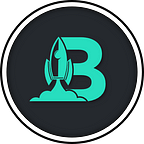Introducing Blockius Multichain Staking & LP Mining Products
Dear community, we are pleased to announce our next pair of products — Staking and LP Mining to help existing and upcoming projects sustain and grow.
Blockchain is an enormously growing space where either someone is inexperienced or afraid of adopting something new. In 2021, we have observed that a lot of projects started losing their token value after two or three months of their IDO.
The incident of losing token value over time has certain reasons. They may include less frequent updates, lengthy roadmap, difficulties in getting client/user acquisition, etc. But we can’t blame projects as we know how difficult it is to deliver something once committed.
But what if we can still maintain or even push token value while letting teams focus on their core product development? Well yes, this is possible with the help of our unique project-oriented staking solutions. Therefore today, we will explore core concepts of staking, our solution, and how it can benefit projects.
What is Staking?
Staking is basically a decentralized savings scheme where people earn interest-based rewards by locking up their crypto holdings.
Our staking products allow projects to incentivize their token holders by rewarding them in native crypto tokens whereas long-term crypto holders can gradually enhance their holding by simply committing their favorite tokens. At Blockius, we offer two kinds of staking mechanisms:
- Continuous Staking
- Maturity Staking
1. Blockius Continuous Staking
Under the continuous staking scheme offered by Blockius, token holders can stake and unstake their holdings for a preferred amount of time while earning rewards for the period they had locked their tokens in. The entire staking pool will seamlessly run until the reward added in the pool goes empty.
Reward mechanism: Per block.
Unlike traditional finance, rather than receiving rewards after the lock term, users earn and receive rewards after the successful generation of a block (seconds) in a respective blockchain. Therefore, regardless of the number of stakers, the reward will be continuously distributed to all pool stakers based on the number of tokens staked in the pool.
However, we’ve introduced locked staking under a continuous staking scheme. Longer the staking period stakers commit, the higher the weightage they’ll receive. To understand this weightage mechanism, have a look at the following pop-up:
For example, Alias is staking her 1000 $BLOS for 6 months while Bob is committing 1 year for his 1000 $BLOS. As per the above snapshot, Alias and Bob will enjoy enhanced weightage of 1.5x and 2x respectively. Meaning, Alias’s staking balance will now be counted as 1500 $BLOS and Bob’s 2000 $BLOS for earning rewards from the staking reward pool. And the great part is, both Alias and Bob can withdraw their earned reward after a cooling period.
The main advantage of such continuous staking pools is the ability to flexibly lock crypto holdings while easily withdrawing earned rewards. Visionary holders always possess a great opportunity to accumulate the tokens they believe in. Aren’t everything sorted here? It seems so.
2. Blockius Maturity Staking
Under the multi-APY, maturity-based staking scheme offered by Blockius, token holders can stake their holdings for a fixed amount of time and earn rewards after the staking period gets ended. The maturity staking pool will be opened for a fixed period within which users can stake their tokens.
Reward mechanism:
- x% maturity APY
- y% early-withdrawal APY
This is kind of similar to fixed deposit (FD) schemed of traditional finance. Token stakers enjoy higher APY when they keep tokens staked until maturity period while receiving comparatively less APY when unstaked, before the maturity period. However, stakers will need to serve a default staking period.
For example, Alias is staking her 500 $BLOS while Bob is committing his 1000 $BLOS tokens. As per the above snapshot, tokens will be locked for 30 days. Now Alice is unstaking his 500 tokens on the 40th day and as she is breaking her FD before 60 days of maturity period, she will receive a reward based on 50% APY. On the other hand, Bob is keeping his tokens staked till 60 days and he has served the entire maturity period, he will be receiving a reward based on 80% APY.
The main advantage of such maturity-based staking pools is the ability to enjoy fixed higher APY if maturity period is served. However, due to the default staking period, tokens can’t be unstaked as per the preference. This could be a great opportunity for long-term holders in enjoying fixed higher APYs in the end.
LP Mining
Liquidity Mining is the event held by projects where liquidity providers are incentivized for staking LP tokens on the platform. In contrast to token staking, where users will be awarded by staking their LP tokens generated by various decentralized exchanges.
Similar to the above-mentioned continuous staking pools, we can deploy LP staking pools based on a reward per block distribution mechanism. Upload liquidity on available token pair, stake received LP tokens in the pool and you’ll start earning rewards — isn’t that too simple?
As move step forward towards decentralized finance, such saving schemes will become more popular. Because of being beneficial for both teams and token holders, such staking schemes are highly likely to become popular as masses adopt DeFi.
Congratulations for reading and understanding the decentralized saving schemes—that too before the majority of the population on planet earth. Utilizing our natively developed and Certik-audited staking products, we will be at the forefront for serving the next technology evolution towards Web 3.0.
Website | Twitter | Telegram | Telegram ANN | Medium | LinkedIn
